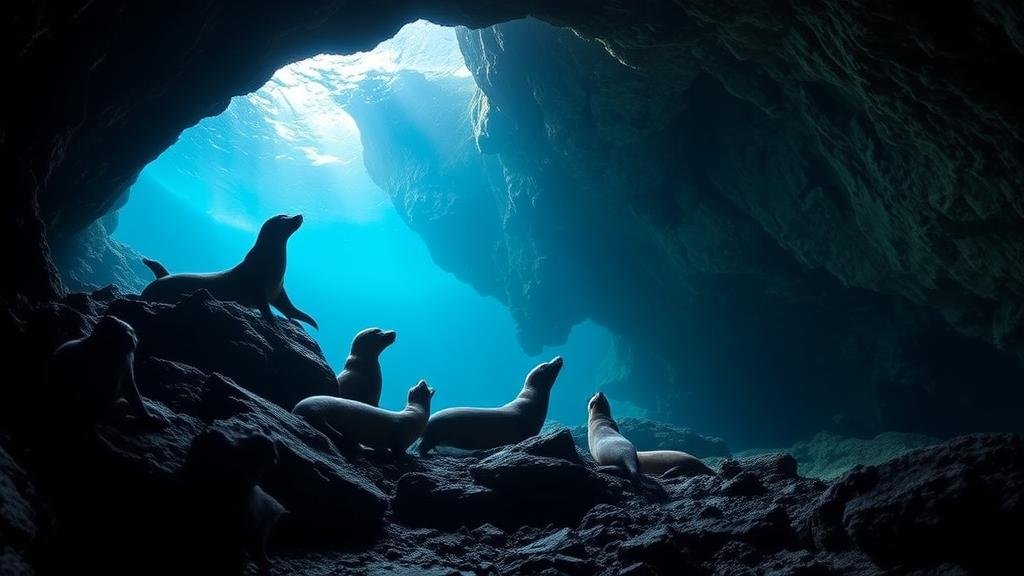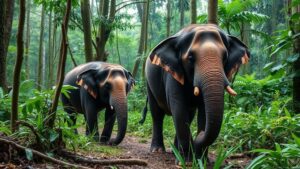Exploring the coastal caves of Alaska where sea lions and ancient myths of aquatic shapeshifters converge.
Exploring the Coastal Caves of Alaska: Where Sea Lions and Ancient Myths Converge
Alaskas coastline is a treasure trove of natural wonders, and among its most intriguing features are the coastal caves that dot the rugged shoreline. These caves not only offer stunning geological formations but also serve as a sanctuary for marine life, including the vibrant sea lion populations. Also, they are steeped in the rich tapestry of ancient myths, particularly the legends of aquatic shapeshifters that have captivated indigenous cultures for centuries. This article delves into the ecological significance of these caves, their mythological relevance, and tips for exploring these unique Alaskan landmarks.
The Coastal Caves: A Natural Marvel
The coastal caves of Alaska are primarily formed through a combination of erosion and geological activity. These natural structures vary in size and shape, often revealing breathtaking rock formations carved by relentless ocean waves. The most notable areas to explore include Kachemak Bay State Park and the Kenai Peninsula, where the interplay of land and sea creates a dynamic environment ripe for discovery.
One remarkable example is the Split Mountain Cave, located near Homer, Alaska. This expansive cave system is known for its unique geological features, including stalactites and stalagmites, formed over thousands of years. Visitors can navigate intricate passages while observing the stunning interplay of light against the darkened rock.
The Sea Lion Populations: A Marine Biodiversity Hub
These coastal caves also serve as vital habitats for marine wildlife, particularly the Steller sea lion (Eumetopias jubatus). The caves provide safe resting sites and breeding grounds for this fascinating species. Alaska is home to approximately 85,000 Steller sea lions, with the largest populations found along the southern coast, most notably in the Gulf of Alaska.
In recent years, conservation efforts have been implemented to protect these populations, as sea lions face threats from habitat loss and climate change. For example, the Marine Mammal Protection Act, enacted in 1972, plays a crucial role in safeguarding Steller sea lions and their habitats through strict regulations against hunting and harassment.
Mythology: The Aquatic Shapeshifters
Beyond their ecological importance, the coastal caves are steeped in myth and legend. Indigenous cultures of Alaska, such as the Yupik and Tlingit peoples, have long told stories of aquatic shapeshifters. e mythical beings, often called Selkies, are said to transform from seal to human, enchanting those who encounter them.
The tales often revolve around themes of love, loss, and the intricate relationship between humans and nature. In Tlingit lore, one popular story tells of a young woman who falls in love with a Selkie, highlighting the duality of existence in both worlds. Such narratives illustrate the deep spiritual connection that indigenous peoples maintain with their environment and the creatures that inhabit it.
Visiting the Coastal Caves: Tips and Precautions
If youre captivated by the allure of Alaskas coastal caves, there are several ways to explore them safely and responsibly:
- Guided Tours: Consider joining a guided tour to gain insights from knowledgeable marine biologists or local guides who can share information about the ecology and mythology of the area.
- Safety Gear: Be sure to bring appropriate safety gear, including life jackets, helmets, and flashlights if you plan to venture into the caves.
- Respect Wildlife: Maintain a safe distance from sea lions and adhere to local regulations to ensure their protection and well-being.
- Stay Informed: Check local weather reports and tide schedules before your visit, as conditions can change rapidly in coastal environments.
Actionable Takeaways
Exploring the coastal caves of Alaska offers a unique convergence of natural beauty and cultural richness. Here are some key takeaways:
- Plan your visit to notable sites like Kachemak Bay and Split Mountain Cave to experience stunning geological formations.
- Engage with the ecological narrative by observing and respecting the diverse marine life, particularly the Steller sea lions.
- Delve into the enchanting world of indigenous myths and understand the significance of stories surrounding aquatic shapeshifters.
- Prioritize safety and environmental conservation during your explorations to help preserve these magnificent natural spaces for future generations.
To wrap up, the coastal caves of Alaska represent a fascinating intersection of nature and mythology, beckoning adventurers and storytellers alike to explore their depths. With the right preparation, visitors can embark on an unforgettable journey through this unique Alaskan landscape.



